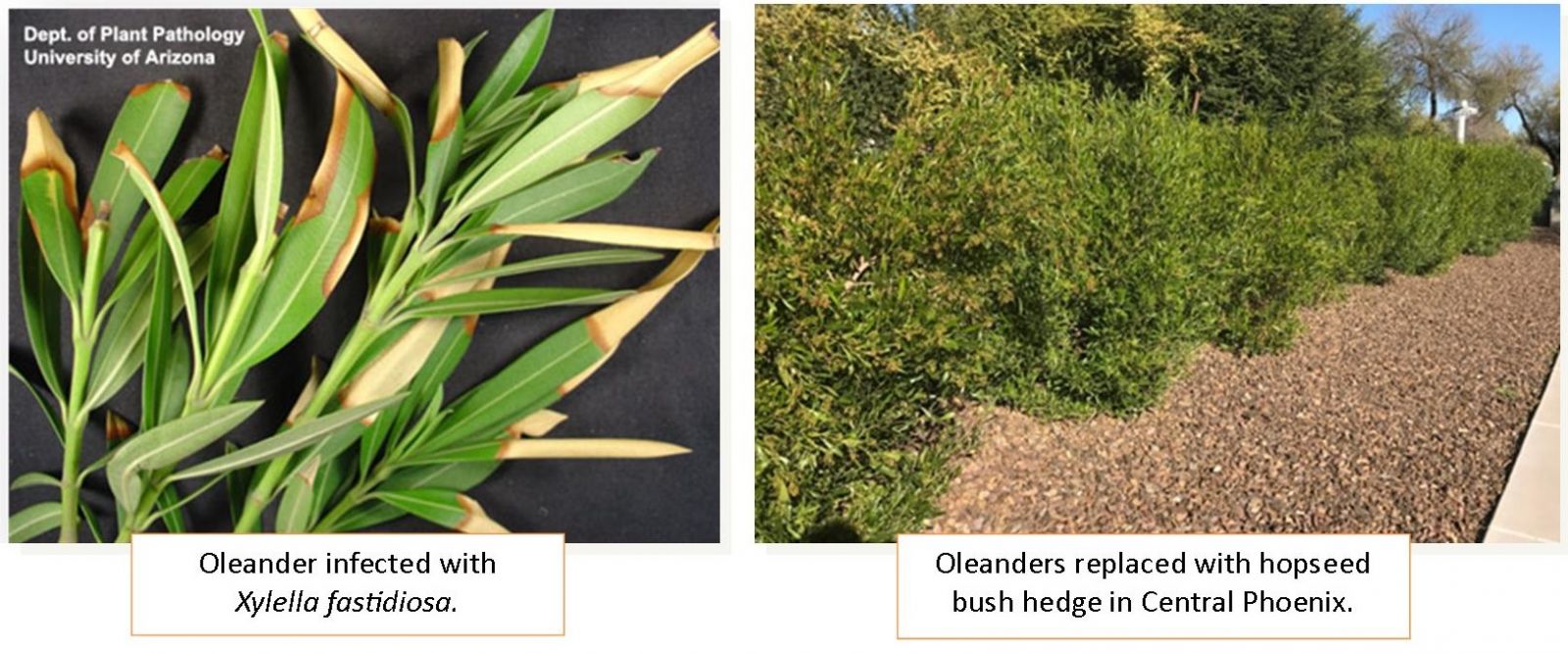We have been receiving calls lately about the incurable disease plaguing oleanders around the state: Oleander Leaf Scorch. Arriving to our state a number of years ago, the disease first surfaced in the Central Phoenix area and has now spread to Paradise Valley, Scottsdale and to other areas around Maricopa County. Here is more information on this fatal plant disease:
Symptoms
Similar to drought, symptoms include randomized branch yellowing and dieback, branch tips appearing dried, dead or scorched. One plant may have no dieback, while an adjacent plant may have multiple branches with symptoms. The only way to be positive of disease presence is to have a pathologist test the foliage.
Cause
Oleander Leaf Scorch (OLS) is caused by bacteria called Xylella fastidiosa. This disease is only transmitted by a vector, which in our region is the Smoketree Sharpshooter, a native insect which transmits the bacteria from limb to limb as it feeds on the foliage. At this time, OLS is mostly impacting standard oleanders. While petite varieties may be susceptible, the disease has not greatly impacted smaller cultivars for unknown reasons.
Solutions
Unfortunately, there is no cure or treatment for this disease. Once a plant has been infected, it will die. There is no timeline of when this death may occur; some plants survive for a year or two, but it is thought that most oleanders will die 3-5 years after the initial infection. Although some claim that rejuvenating cutbacks may prolong life, there is no scientific proof of this practice. Planning for plant replacement is the best option at this time.
Plant replacement options
Dodonaea viscosa (hopseed): makes a great hedge, however it does not take well to trimming into a formal hedge. Make sure to manage water closely to prevent overgrowth of this native shrub. It can also be prone to yellowing (chlorosis) if overwatered.
Vauquelinia californica (Arizona rosewood): not common in the Phoenix area, but is often used in Tucson as a hedge. It can be trained to be a large hedge, but does not take well to shearing. It can show some signs of heat stress during our hottest weeks of the year, but the close proximity of turfgrass helps create a microclimate and may ease the heat stress.
Pistacia lentiscus (mastic): can be used as a deep green evergreen hedge, growing up to 25’ tall. This is an excellent choice for broad spaces, is not high maintenance and does not require ample water. Mastic tolerates reflective heat and hard freezes in our area.
Keep a close eye out for symptoms of scorch, and if you suspect the disease, first rule out irrigation problems, then consider lab testing. Discuss plant replacement options with your landscape professional and decide which plant makes most sense for your community.
